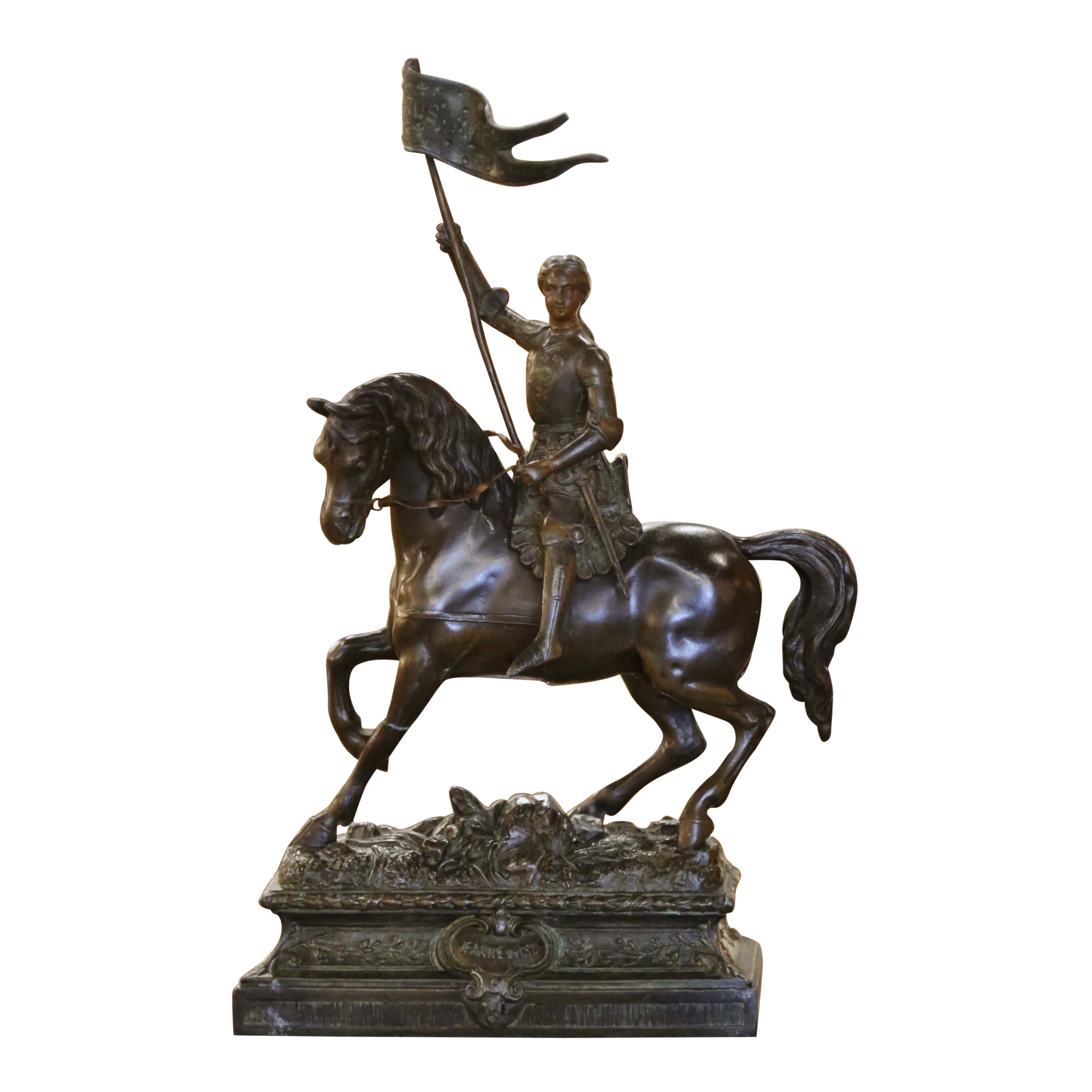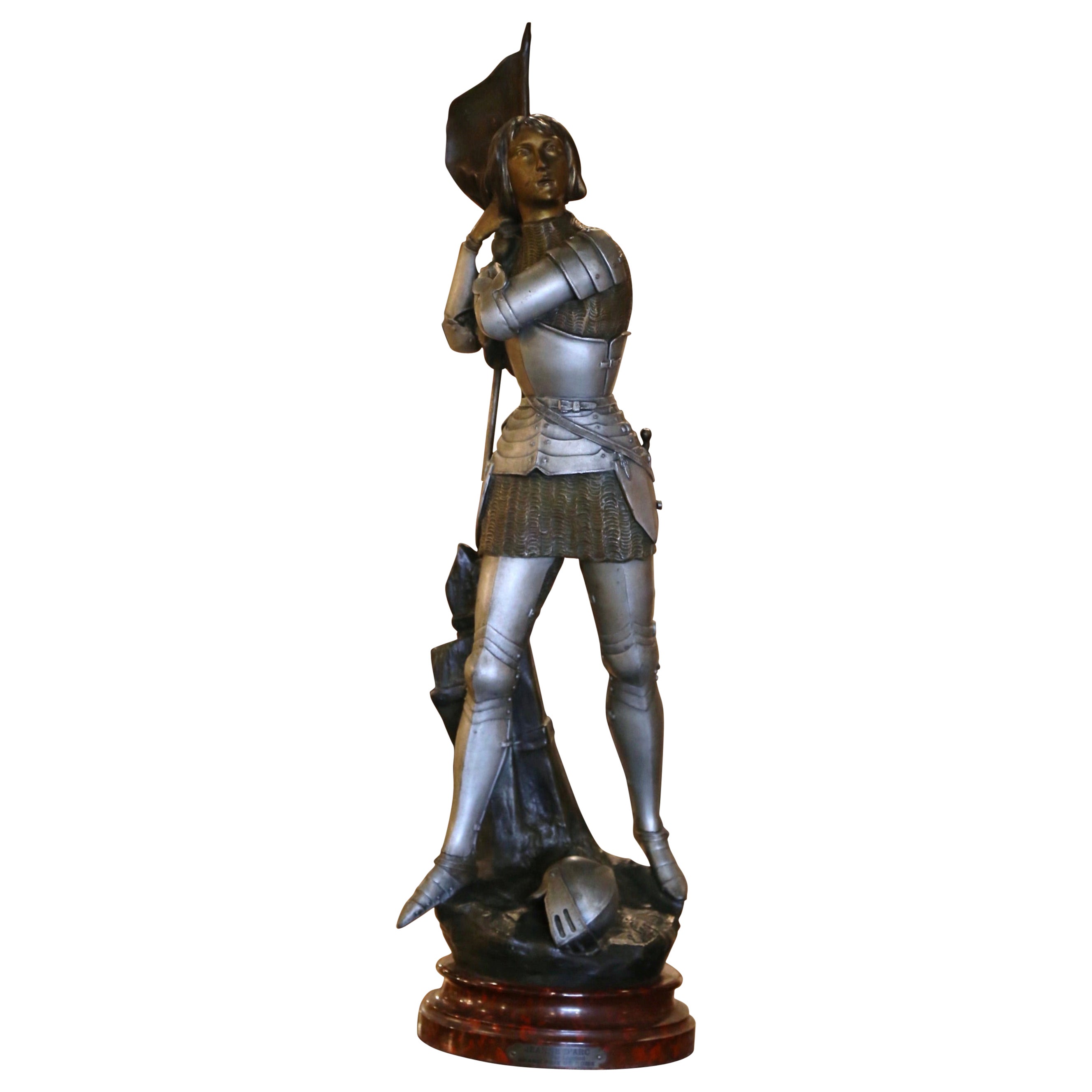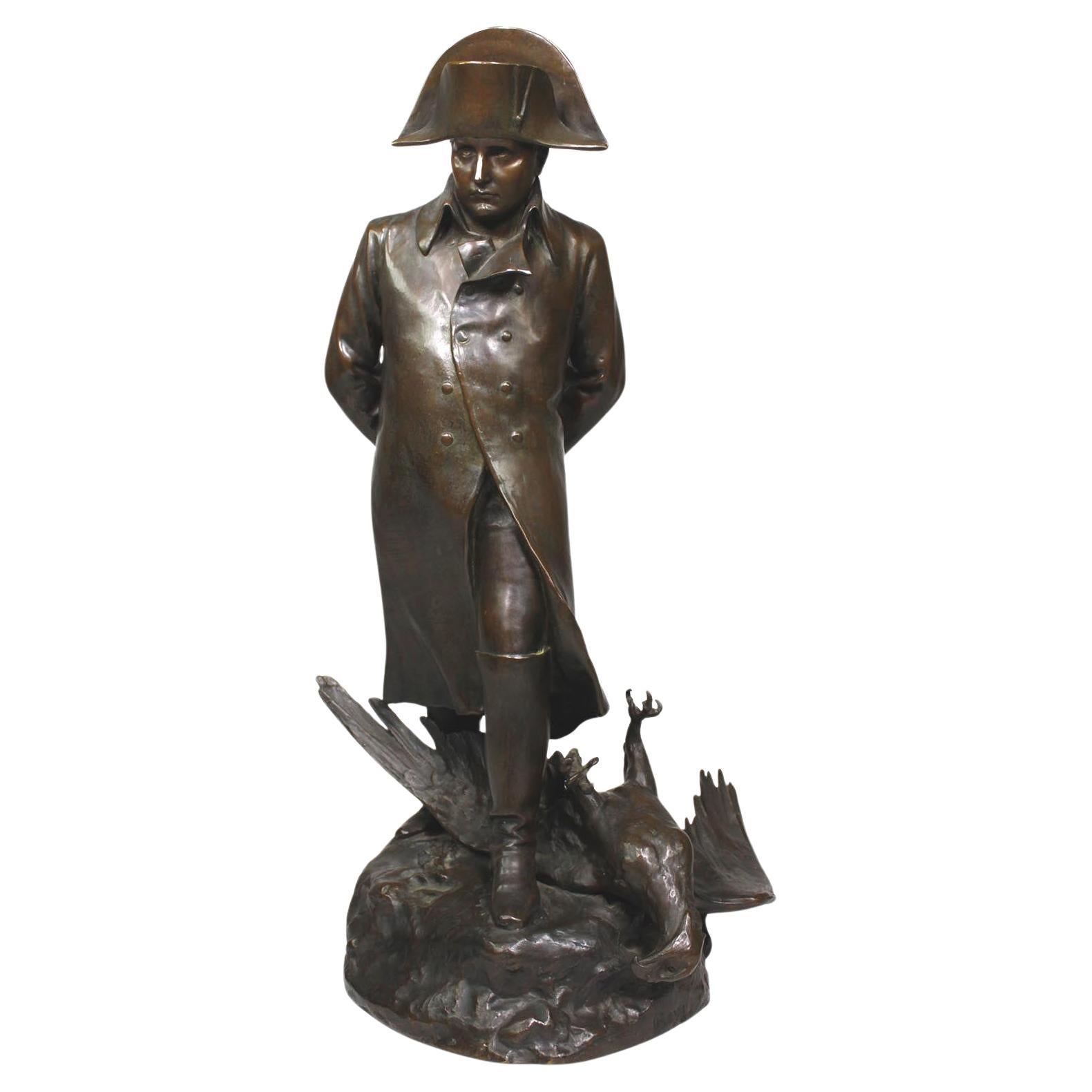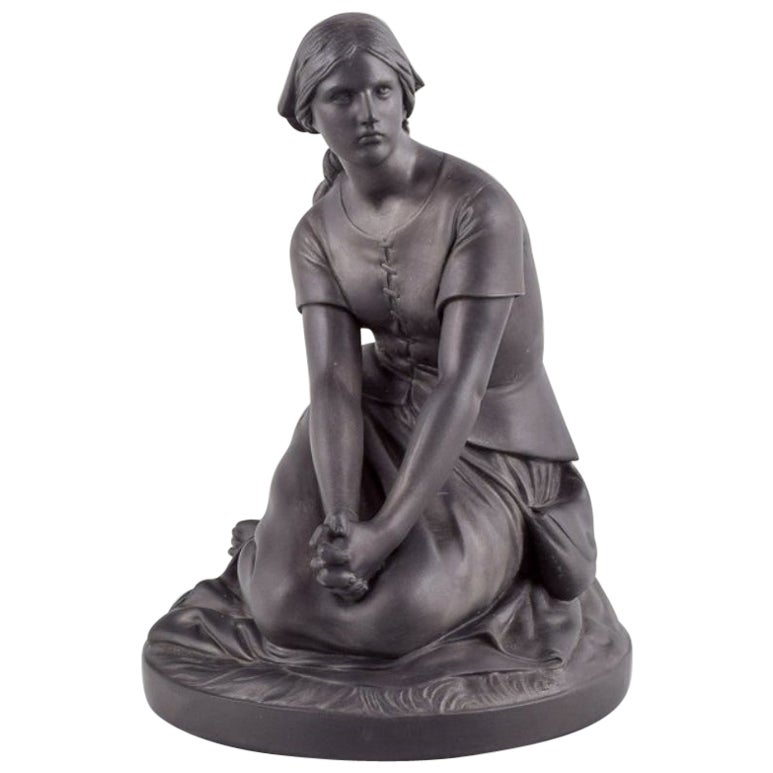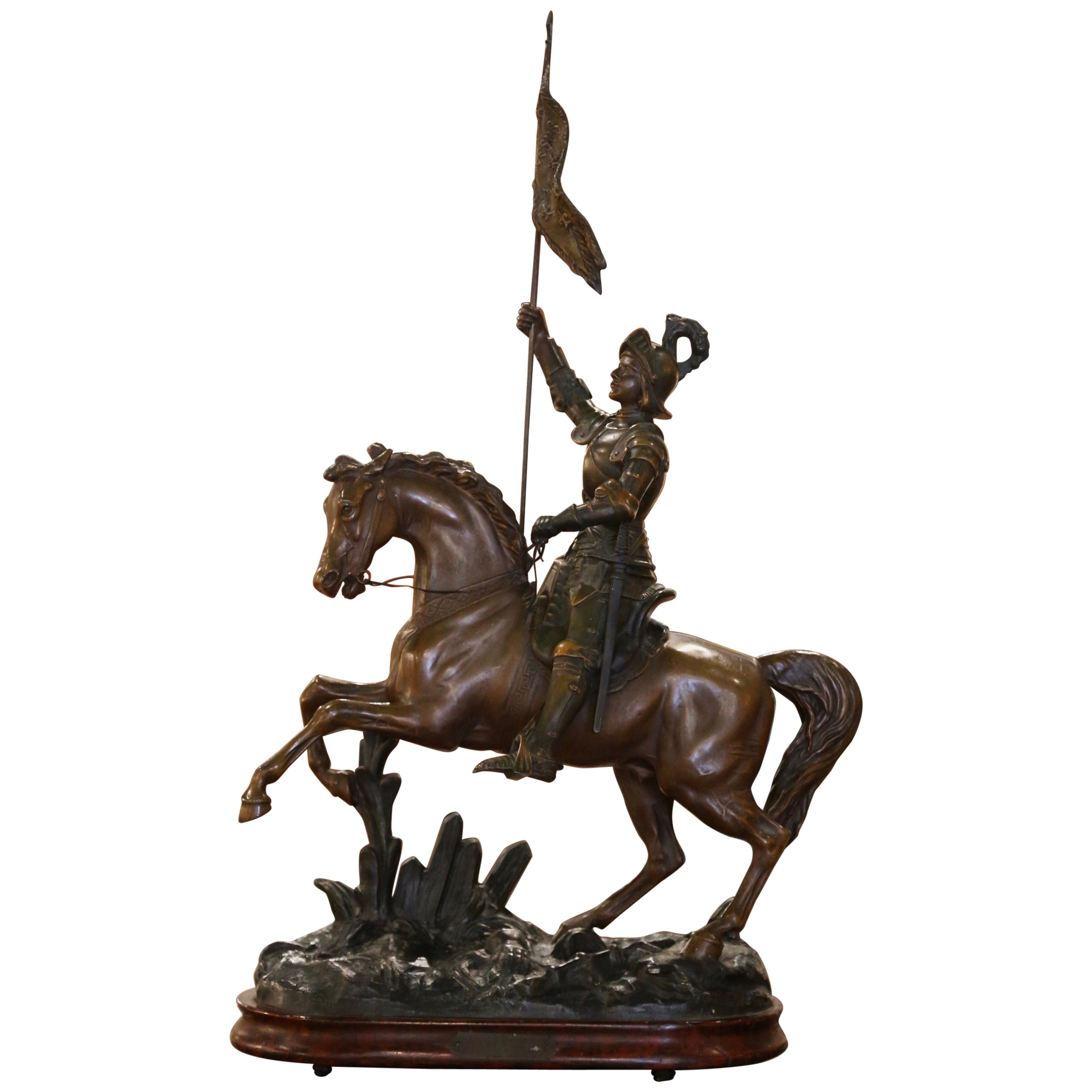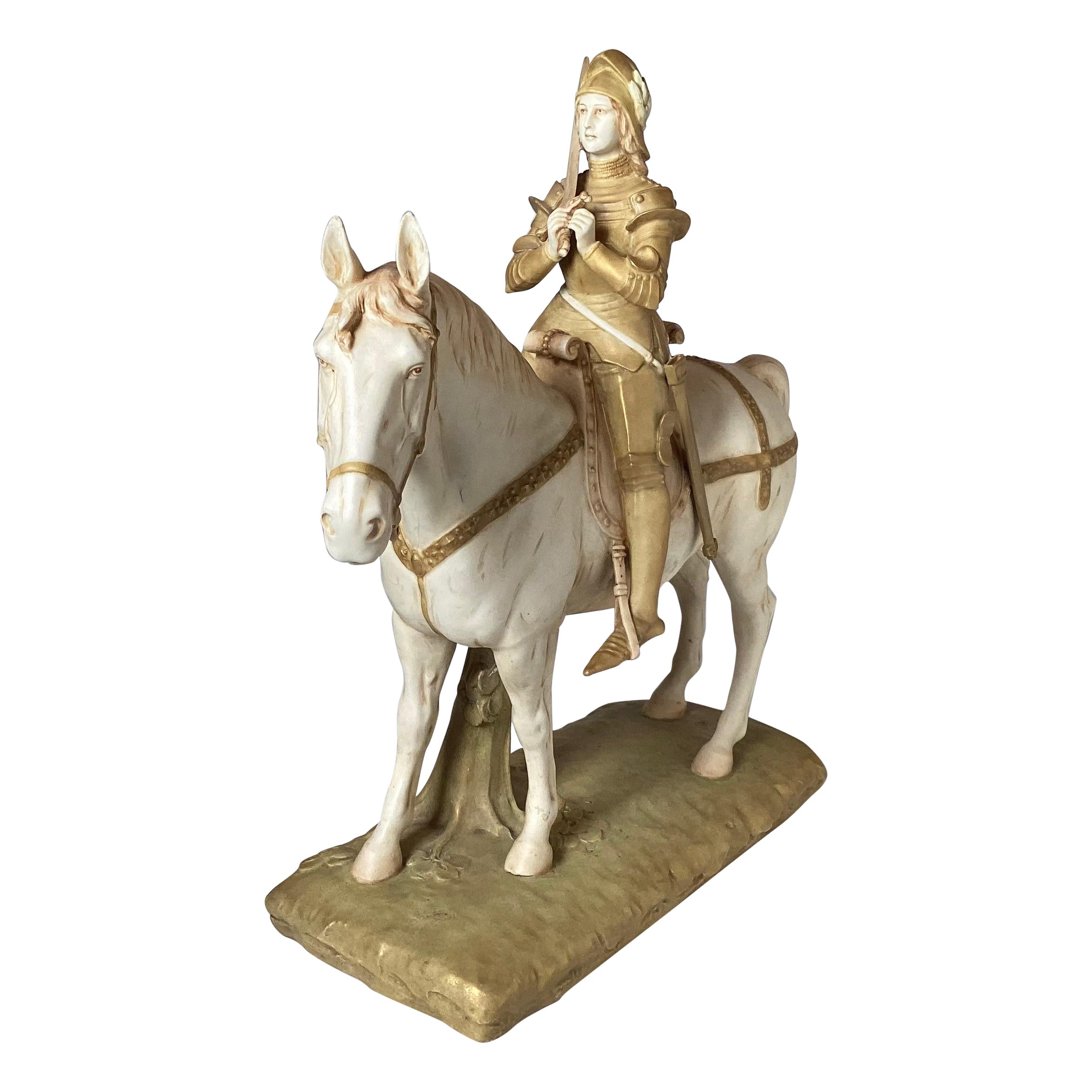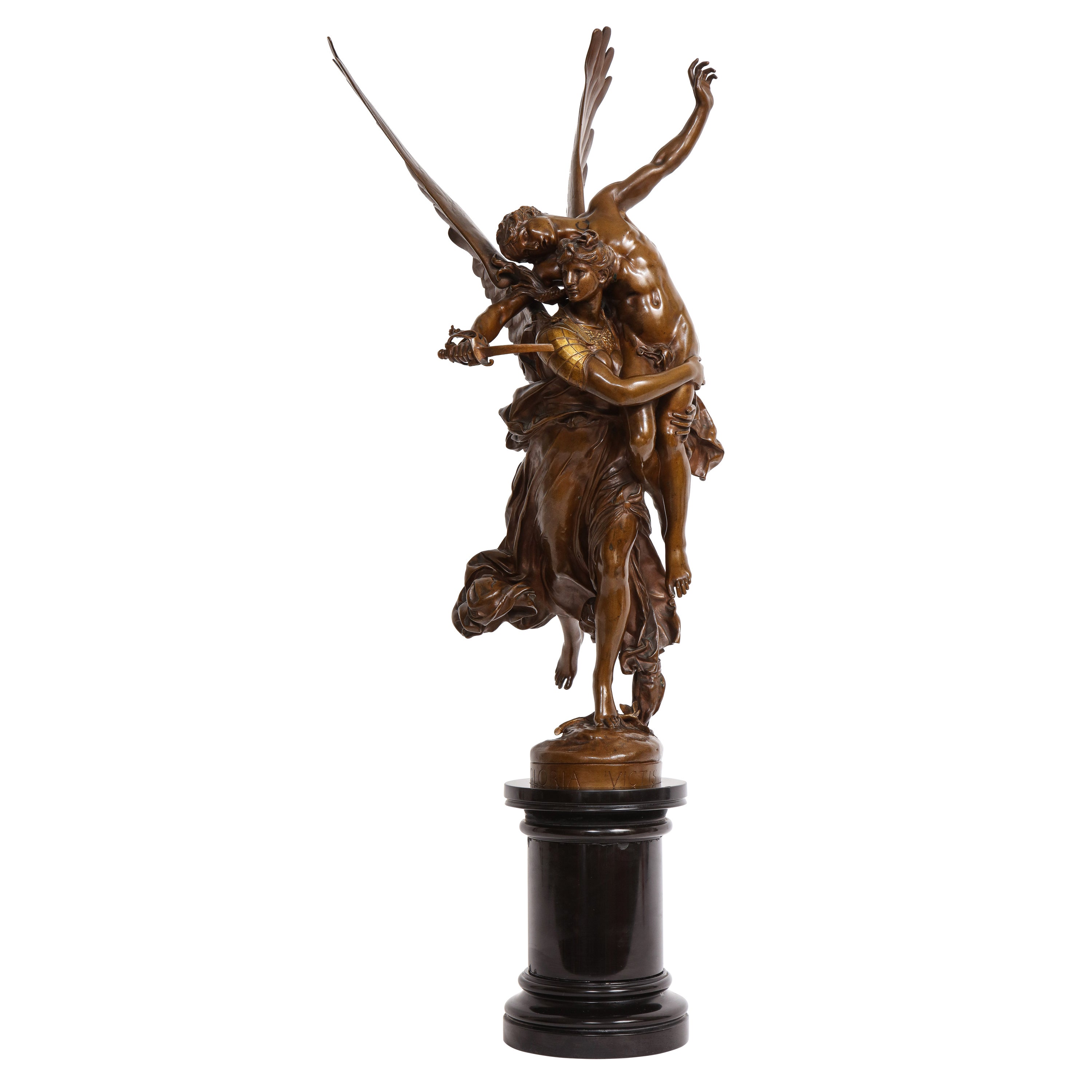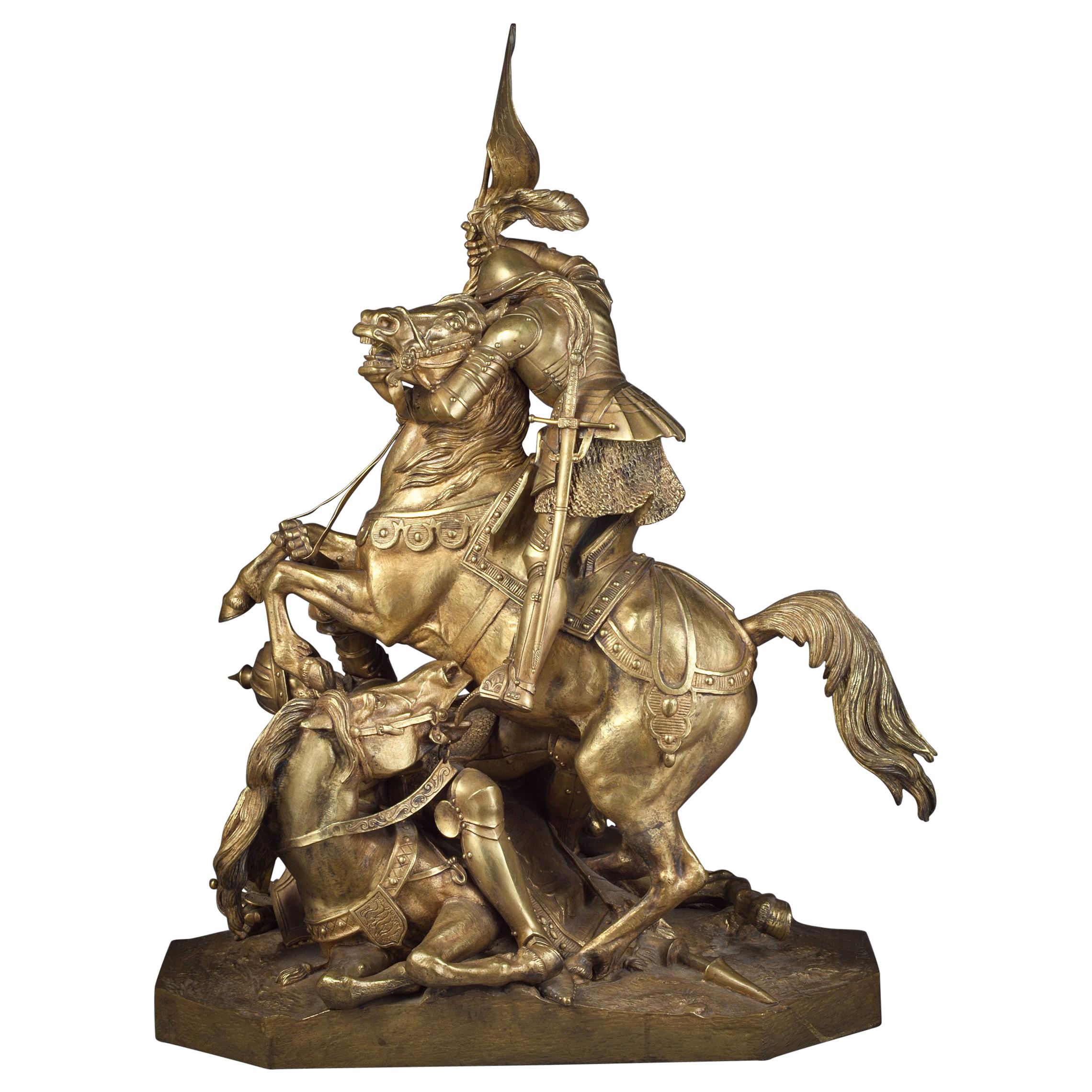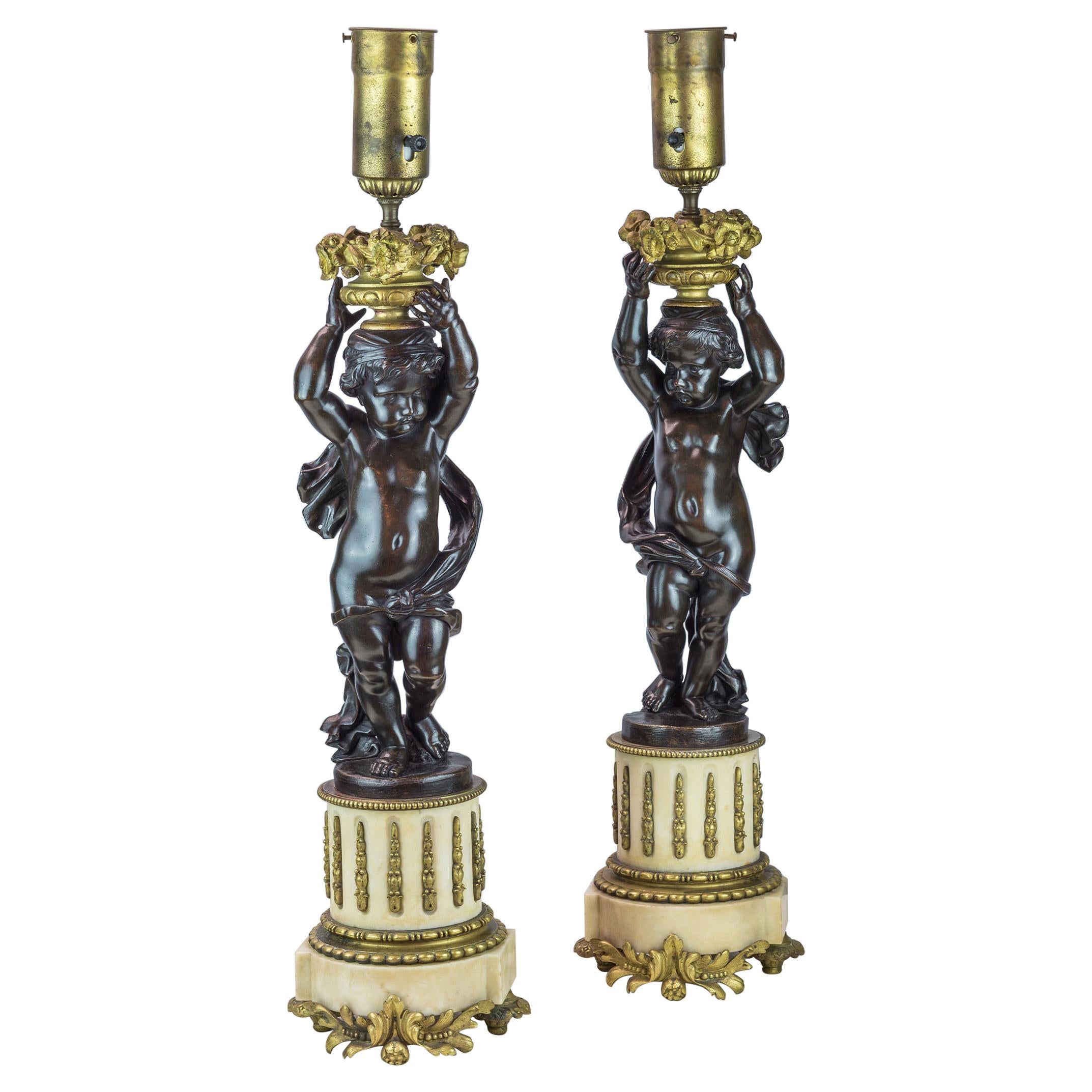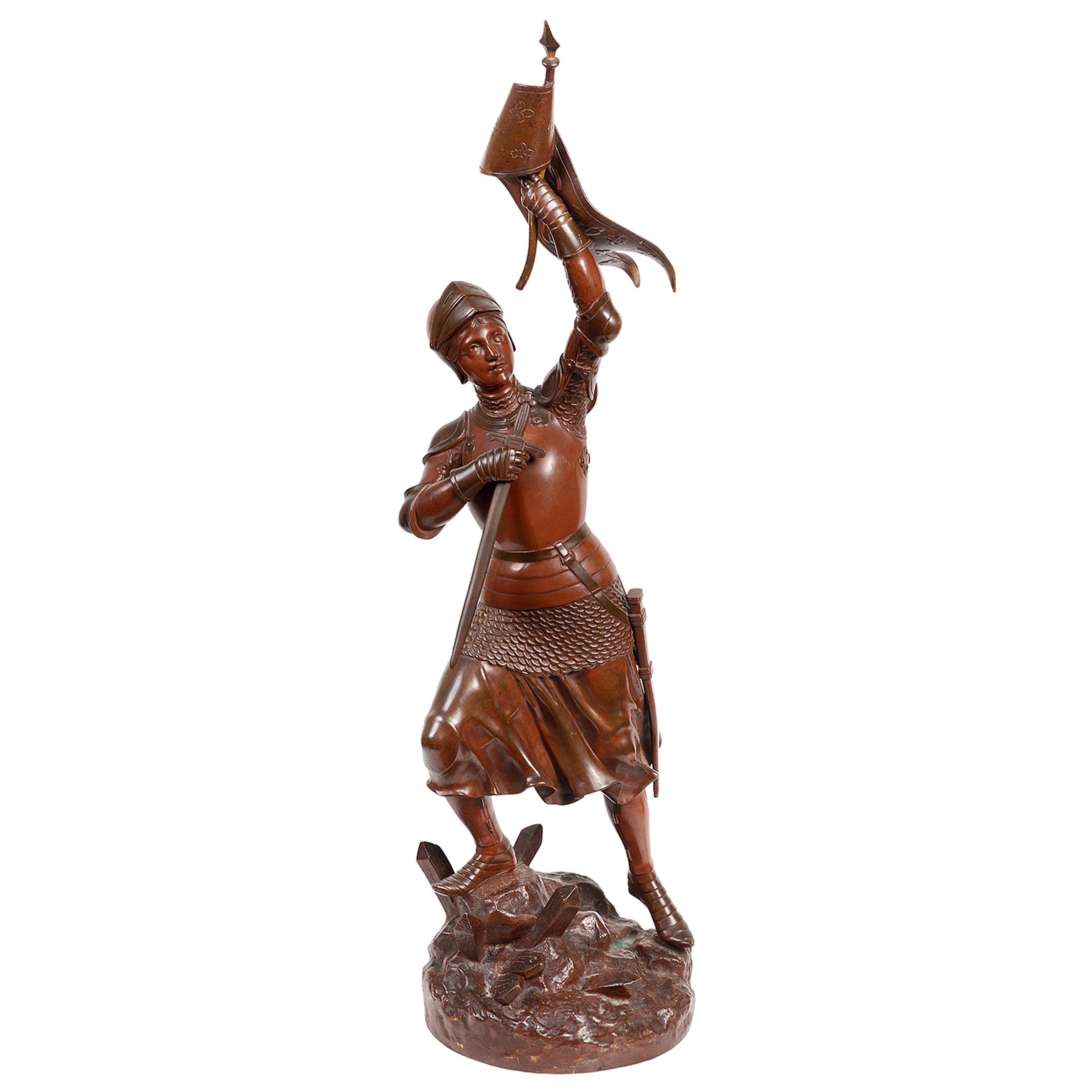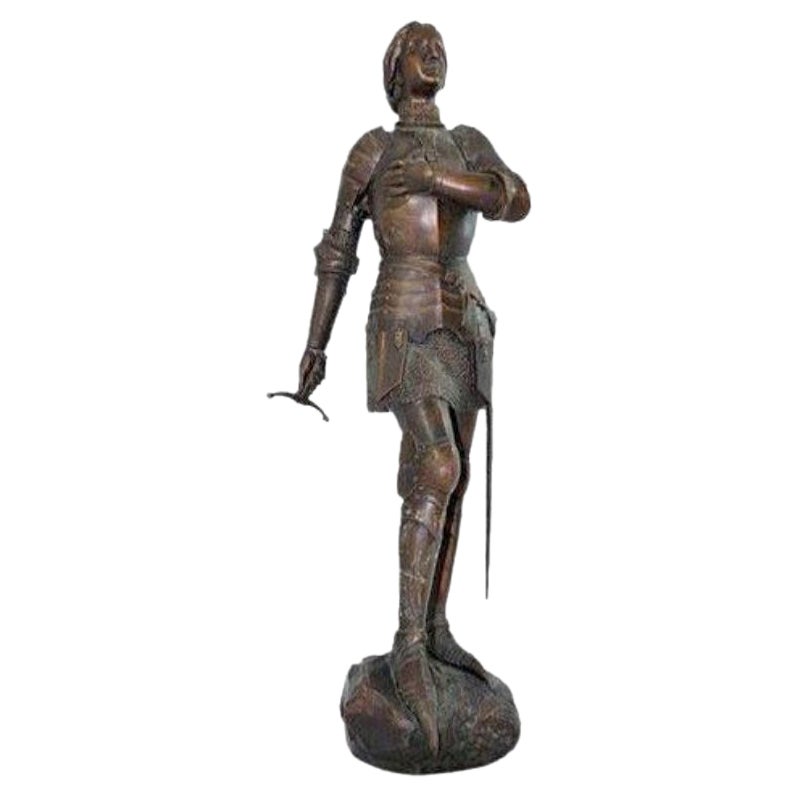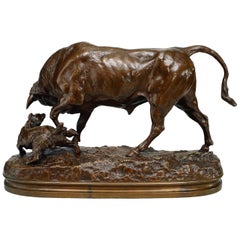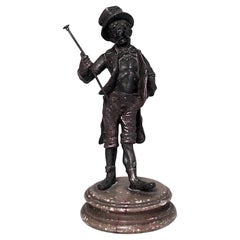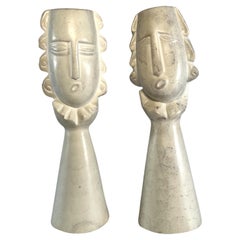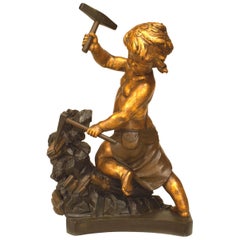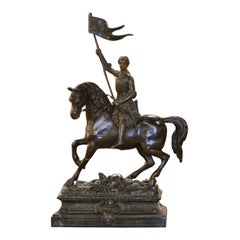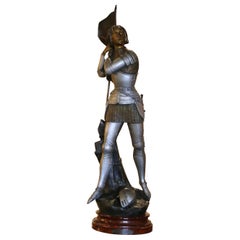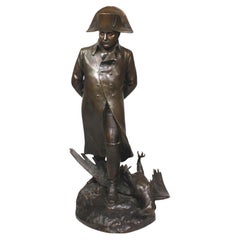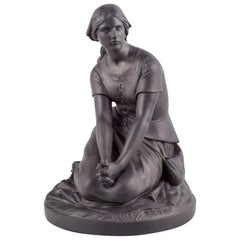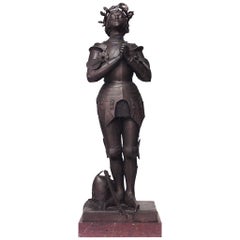
French Patinated Metal Joan of Arc Figure by Mercie
View Similar Items
Want more images or videos?
Request additional images or videos from the seller
1 of 5
French Patinated Metal Joan of Arc Figure by Mercie
$4,200List Price
About the Item
- Creator:Marius Jean Antonin Mercié (Artist)
- Dimensions:Height: 26 in (66.04 cm)Width: 10 in (25.4 cm)Depth: 7 in (17.78 cm)
- Materials and Techniques:
- Place of Origin:
- Period:
- Date of Manufacture:19th century
- Condition:
- Seller Location:Queens, NY
- Reference Number:Seller: 0428221stDibs: LU97792131112
About the Seller
4.9
Recognized Seller
These prestigious sellers are industry leaders and represent the highest echelon for item quality and design.
Platinum Seller
Premium sellers with a 4.7+ rating and 24-hour response times
Established in 1939
1stDibs seller since 2013
1,003 sales on 1stDibs
Authenticity Guarantee
In the unlikely event there’s an issue with an item’s authenticity, contact us within 1 year for a full refund. DetailsMoney-Back Guarantee
If your item is not as described, is damaged in transit, or does not arrive, contact us within 7 days for a full refund. Details24-Hour Cancellation
You have a 24-hour grace period in which to reconsider your purchase, with no questions asked.Vetted Professional Sellers
Our world-class sellers must adhere to strict standards for service and quality, maintaining the integrity of our listings.Price-Match Guarantee
If you find that a seller listed the same item for a lower price elsewhere, we’ll match it.Trusted Global Delivery
Our best-in-class carrier network provides specialized shipping options worldwide, including custom delivery.More From This Seller
View AllFrench Bronze Figure of a Charging Bull by Valton
By Charles Valton
Located in Queens, NY
French bronze figure of bull with attacking dog on an oval base (signed alton),
19th or 20th century.
Category
Antique Late 19th Century French Sculptures
Materials
Bronze
Victorian Metal Strutting Man Figure
Located in Queens, NY
American Victorian metal figure of strutting black man with cane and top hat on green onyx round base
Category
Antique Late 19th Century American Victorian Figurative Sculptures
Materials
Metal
Pair of French Modern Cream Marble Figural Tabletop Sculptures
Located in Queens, NY
Pair of French Modern Cream Marble Figural Tabletop Sculptures
Category
20th Century French Mid-Century Modern Figurative Sculptures
Materials
Marble
French Louis XV Cupid Figure
Located in Queens, NY
French Louis XV style (19th Cent) painted and gold trimmed figure of cupid with hammer and chisel.
Category
Antique 19th Century Louis XV Figurative Sculptures
Materials
Metal
$18,250
Pair of Green Patinated Bronze Horses
By Ludovico De Luigi
Located in Queens, NY
Pair of Italian Renaissance style green patinated bronze figure of horse walking (from a series of 1,000 titled: "Cavalli di San Marco II", signed by L...
Category
20th Century Italian Renaissance Animal Sculptures
Materials
Bronze
$12,000 / set
Pair of Continental Patinated Copper Elephant Bookends
Located in Queens, NY
Pair of Continental (possibly Austrian - 20th Century) bronze-patinated copper bookends in the form of elephants. (PRICED AS Pair)
Category
20th Century European Bookends
Materials
Copper
You May Also Like
19th Century French Patinated Spelter Figure of Joan of Arc on Horse
Located in Dallas, TX
Decorate an office of a study with this elegant statue of Joan of Arc, the iconic French heroine and saint. Crafted in France circa 1870, the antique figure sits on a rectangular bas...
Category
Antique Mid-19th Century French Figurative Sculptures
Materials
Spelter
Early 20th Century French Joan-of-Arc Patinated Spelter Figure by Ernest Legrand
Located in Dallas, TX
Crafted in France circa 1900, the antique sculpture depicts Sainte Jeanne d'Arc standing in armor clothing, and poetically waving the victory flag after the battle of Orleans. The sc...
Category
Early 20th Century French Figurative Sculptures
Materials
Spelter
French Bronze of Napoleon Marching in Waterloo After Marius-Jean-Antonin Mercié
By Marius Jean Antonin Mercié
Located in Los Angeles, CA
A Fine and Large French Early 20th Century Bronze of Napoleon Marching in Waterloo Cast after a model by Marius-Jean-Antonin Mercié (French, 1845-1916). The impressive bronze sculptu...
Category
Antique Early 1900s French Empire Figurative Sculptures
Materials
Bronze
L. Hjorth, Bornholm. Figure of Joan of Arc in black terracotta.
Located in København, Copenhagen
L. Hjorth, Bornholm.
Figure of Joan of Arc in black terracotta.
Model number 597.
Circa 1900.
Marked.
In excellent condition.
Dimensions: H 24,5 cm. x D 17,5 cm.
Category
Early 20th Century Danish Figurative Sculptures
Materials
Terracotta
19th Century French Patinated Spelter Statue Composition "Joan of Arc on Horse"
Located in Dallas, TX
Decorate an office of a study with this wonderful antique statue of Joan of Arc. Crafted in France circa 1870, and resting one a wooden base, the figure depicts Sainte Jeanne d' Arc,...
Category
Antique Mid-19th Century French Figurative Sculptures
Materials
Spelter
Unique Hand Painted Porcelain Figure of Joan of Arc Riding a Horse
By Royal Vienna Porcelain
Located in Lambertville, NJ
Stunning porcelain figure of Joan of Arc, made by Royal Vienna. The highly detailed sculpture with had painted details with a clear mark indication Royal Vienna, artist is Ernst Wahl...
Category
Early 20th Century Austrian Figurative Sculptures
Materials
Porcelain
Recently Viewed
View AllMore Ways To Browse
Antique Joan Of Arc
Joan Of Arc Sculpture
Antonin Mercie
Mid Century Italian Sculptures
Italian Carved Sculpture
Minerals And Crystals
Marble Sculpture Gold
Sculpture Base
Hand Carved Wood Sculptures
French Shop Signs
Carved Wooden Furniture
French Marble Sculpture
Natural History Objects
French Bronze Sculptures 19th Century
19th Century French Bronze Sculptures
Long Hair
Antique Egypt
Green Bronze Patina
